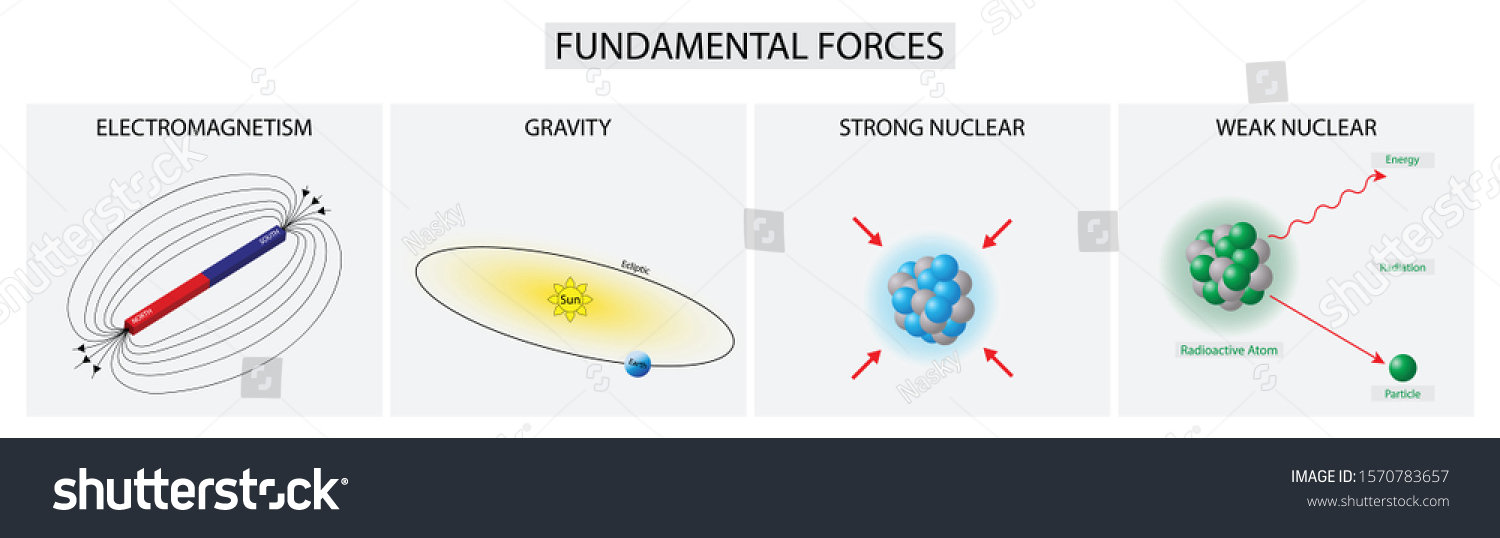3.9 Gravitational and Electromagnetic Forces
4 min read•june 18, 2024
Daniella Garcia-Loos
AP Physics 2 🧲
61 resourcesSee Units
Gravitational and Electromagnetic Forces
The strength of electromagnetic forces is determined by the spatial scale of the situation, the magnitude of the electric charges, and the motion of the electrically charged objects involved. Here are some specific ways in which these factors influence the strength of electromagnetic forces:
- Spatial scale: According to Coulomb's law, the strength of the electric force between two charged particles decreases with the square of the distance between them. This means that the electric force becomes weaker as the distance between the charged particles increases. Similarly, the strength of the magnetic force between two moving charged particles decreases with the square of the distance between them.
- Magnitude of the electric charges: The electric force between two charged particles is directly proportional to the magnitude of the charges. This means that the electric force becomes stronger as the magnitude of the charges increases.
- Motion of the electrically charged objects: The magnetic force between two moving charged particles is directly proportional to the velocity of the particles. This means that the magnetic force becomes stronger as the velocity of the particles increases. In addition, the direction of the magnetic force is determined by the direction of the velocity and the direction of the magnetic field.
Overall, the strength of electromagnetic forces is determined by a combination of these factors, which can vary depending on the specific situation.
There are a lot of similarities between the gravitational force and the electromagnetic force. These similarities, and some differences, are shown below.
Electric vs Gravitational Force
Here are some similarities and differences between gravitational and electric forces:
Similarities:
- Both forces can act at a distance, meaning they can affect objects without physically touching them.
- Both forces can be described mathematically using the inverse square law, which states that the strength of the force decreases as the distance between the objects increases.
Differences:
- Gravitational force is a type of attractive force that exists between any two objects with mass. Electric force, on the other hand, can be either attractive or repulsive, depending on the charge of the objects.
- Gravitational force is much weaker than electric force. For example, the gravitational force between the Earth and a person is about a hundred billion times weaker than the electric force between the electrons in the person's body and the protons in the atoms of their body.
- Gravitational force is always attractive, meaning it always tries to pull objects together. Electric force can be either attractive or repulsive, depending on the charge of the objects.
- Gravitational force is always proportional to the mass of the objects, meaning more massive objects will experience a stronger gravitational force. Electric force is proportional to the charge of the objects, meaning more highly charged objects will experience a stronger electric force.

The image shows the 4 main fundamental forces. You will encounter both the nuclear forces in unit 7!
Example Problem:
The gravitational force between the Earth and the Moon is much weaker than the gravitational force between the Earth and a nearby building. Compare and contrast the strength of the gravitational forces in these two situations, taking into account the spatial scale of the situations and the masses of the objects involved.
Solution:
To answer this question, you would need to consider the following factors:
- Spatial scale: The gravitational force between the Earth and the Moon is much weaker than the gravitational force between the Earth and a nearby building because the distance between the Earth and the Moon is much greater than the distance between the Earth and the building. According to the inverse-square law, the strength of the gravitational force decreases with the square of the distance between the objects, so a greater distance leads to a weaker force.
- Masses of the objects: The gravitational force between the Earth and the Moon is much weaker than the gravitational force between the Earth and a nearby building because the mass of the Moon is much smaller than the mass of the Earth. According to the equation for gravitational force, the strength of the force is directly proportional to the mass of the objects, so more massive objects experience a stronger force.
You could also compare and contrast the strength of the gravitational forces in these two situations with other types of forces, such as the electric force or the strong nuclear force. For example, you could discuss how the gravitational force is much weaker than the electric force at short distances, but becomes stronger at larger distances.
Browse Study Guides By Unit
💧Unit 1 – Fluids
🔥Unit 2 – Thermodynamics
⚡️Unit 3 – Electric Force, Field, & Potential
💡Unit 4 – Electric Circuits
🧲Unit 5 – Magnetism & Electromagnetic Induction
🔍Unit 6 – Geometric & Physical Optics
⚛️Unit 7 – Quantum, Atomic, & Nuclear Physics
📆Big Reviews: Finals & Exam Prep
📚Study Tools

Fiveable
Resources
© 2025 Fiveable Inc. All rights reserved.